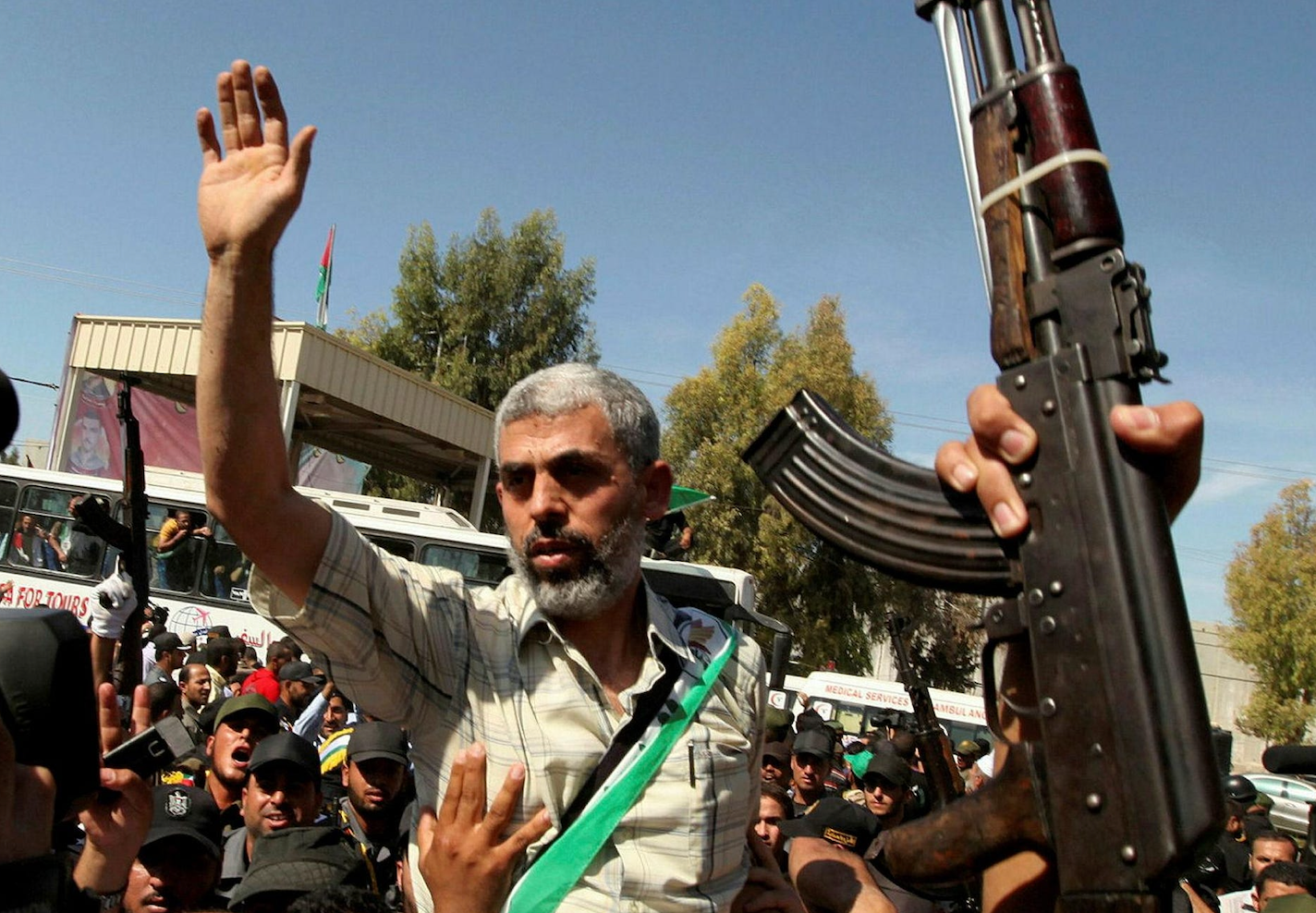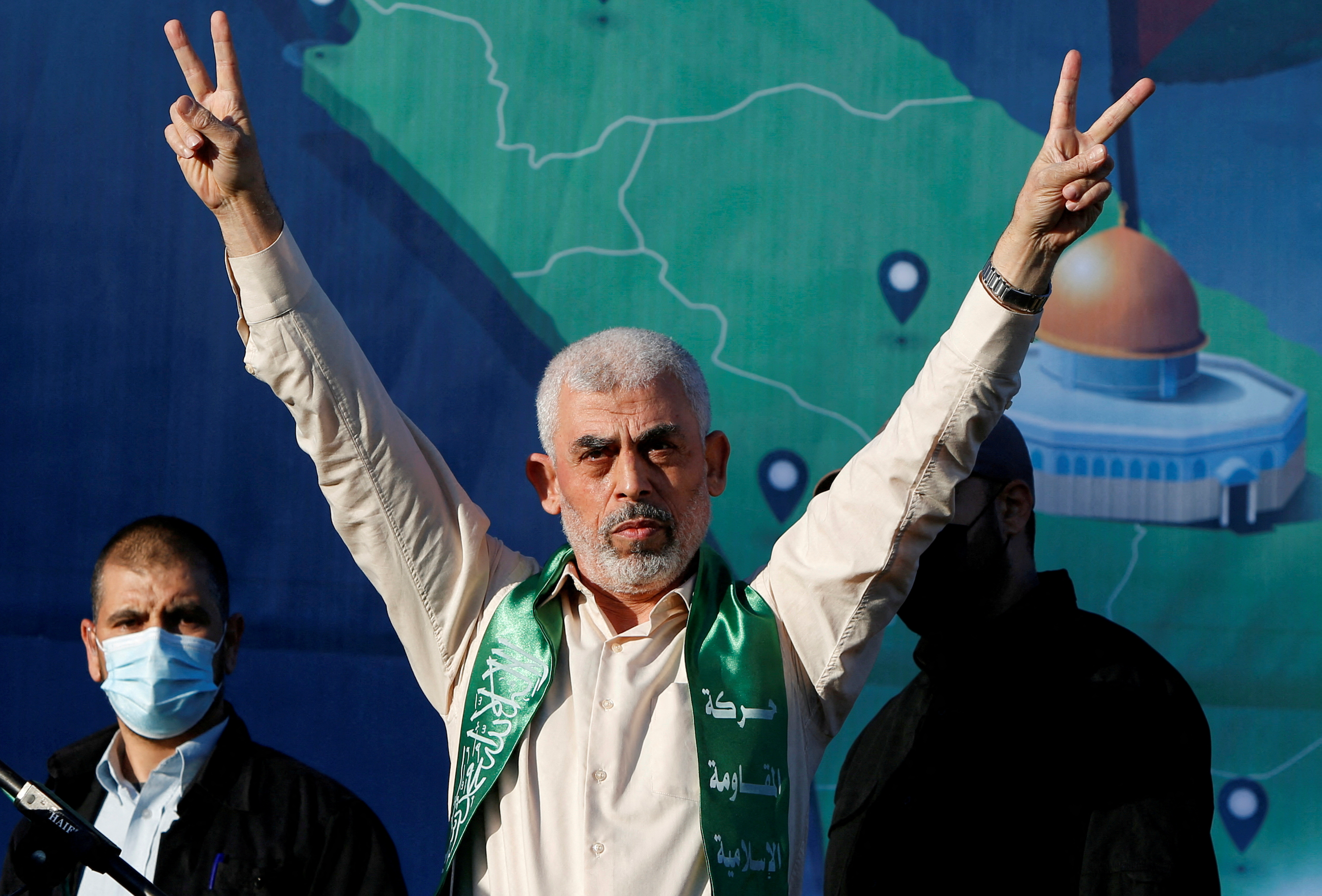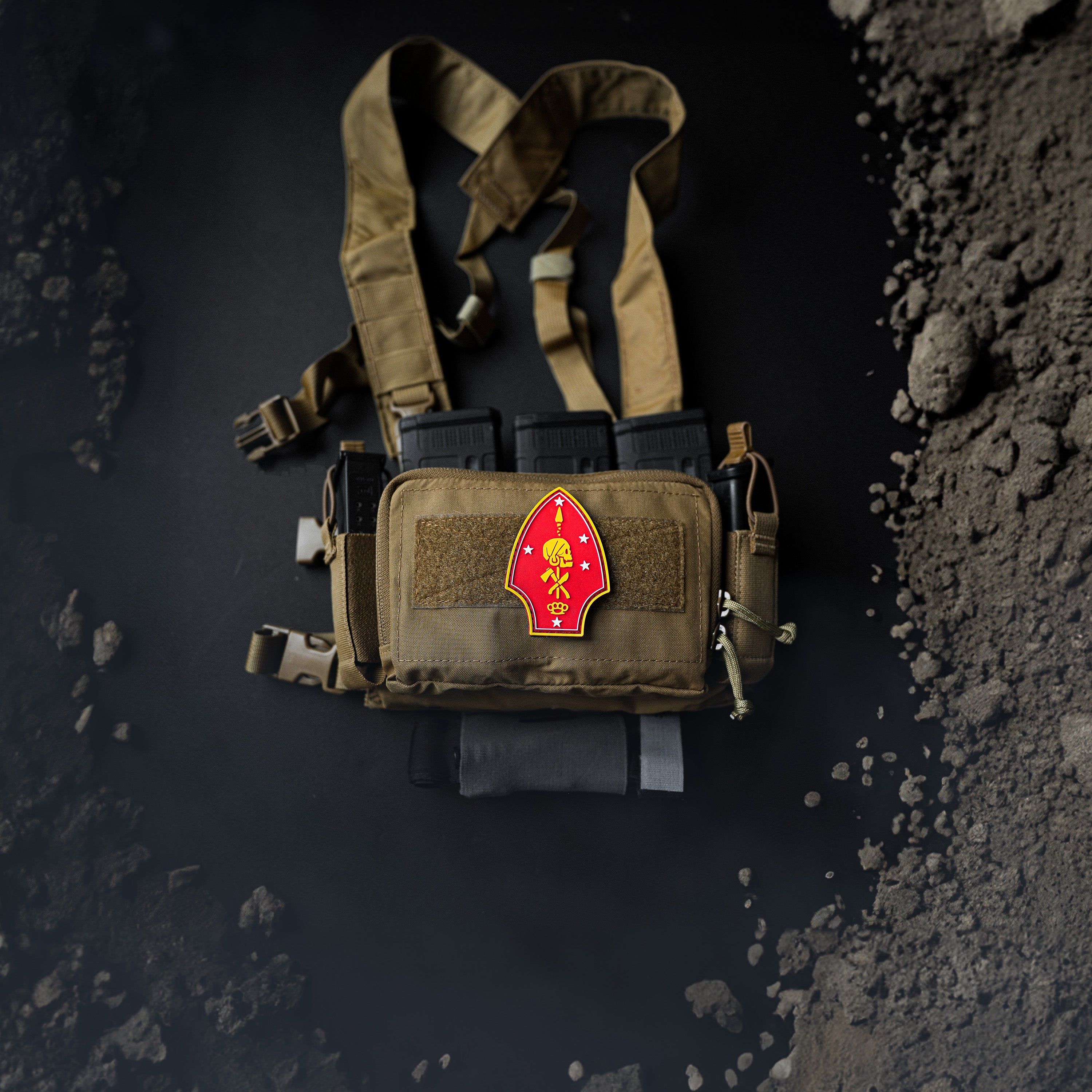
Israeli military says checking possibility that Hamas leader Sinwar has been eliminated
By James Mackenzie
JERUSALEM (Reuters) -The Israeli military said on Thursday that it was checking the possibility that it has killed Hamas leader Yahya Sinwar following an operation in the Gaza Strip that it said had targeted three militants.
"At this stage, the identity of the terrorists cannot be confirmed," it said in a statement.
It said there were no signs that Israeli hostages had been present in the building where the three militants were killed.
There was no immediate comment from Hamas.
If confirmed, the death of Sinwar would represent a major boost to the Israeli military and Prime Minister Benjamin Netanyahu after a string of high-profile assassinations of prominent leaders of its enemies in recent months.
Israel's Army Radio said the incident had occurred during a targeted ground operation in the city of Rafah in the southern Gaza Strip during which Israeli troops killed three militants and took their bodies.
It said visual evidence suggested it was likely that one of the men was Sinwar and DNA tests were being conducted. Israel has samples of Sinwar's DNA from his period in an Israeli jail.
Sinwar, the chief architect of the Oct. 7, 2023 attack on Israel that triggered the Gaza war, has been at the top of Israel's wanted list ever since. But he has so far eluded detection, possibly hiding in the warren of tunnels Hamas has built under Gaza over the past two decades.
Previously leader of Hamas in the Gaza Strip, he was named as its overall leader following the assassination of former political chief Ismail Haniyeh in Tehran in August.
Israel also killed Hasan Nasrallah, leader of the Iranian-backed Hezbollah movement, in Beirut last month as well as much of the top leadership of the group's military wing.
Hamas-led gunmen attacked Israel on Oct 7, 2023 killing some 1,200 people and taking more than 250 hostages into Gaza. Israel's campaign in response has killed more than 42,000 people, turned much of Gaza into rubble and displaced most of its population.
(Reporting by Tala RamadanEditing by Gareth Jones)










